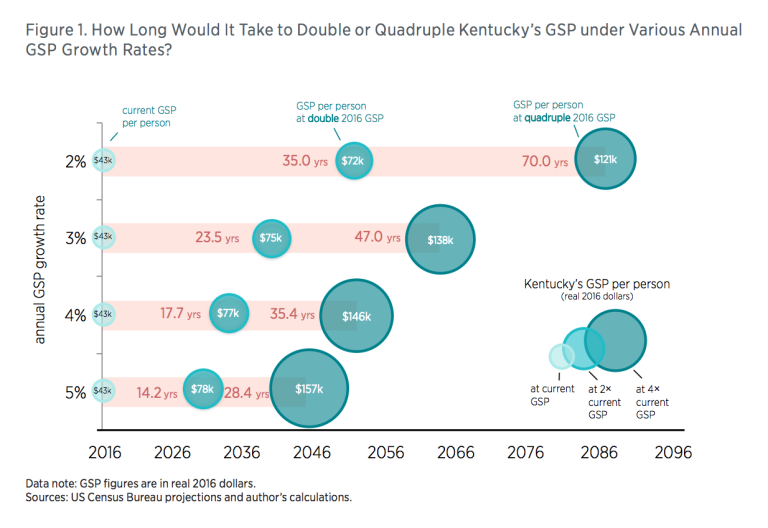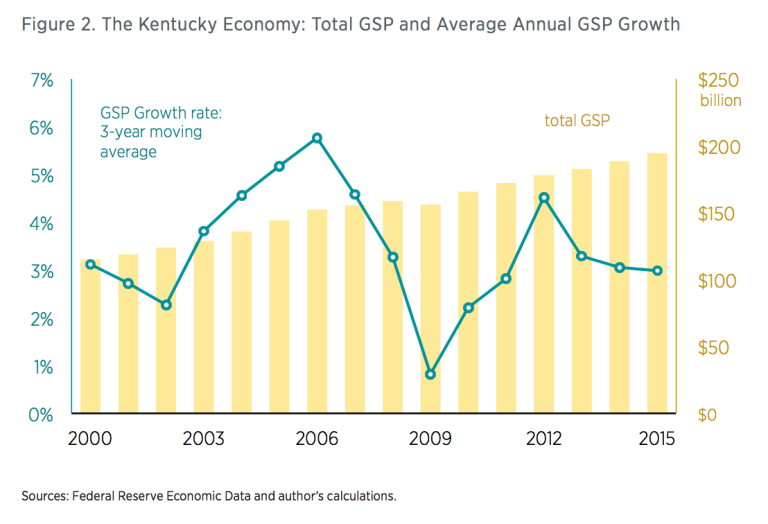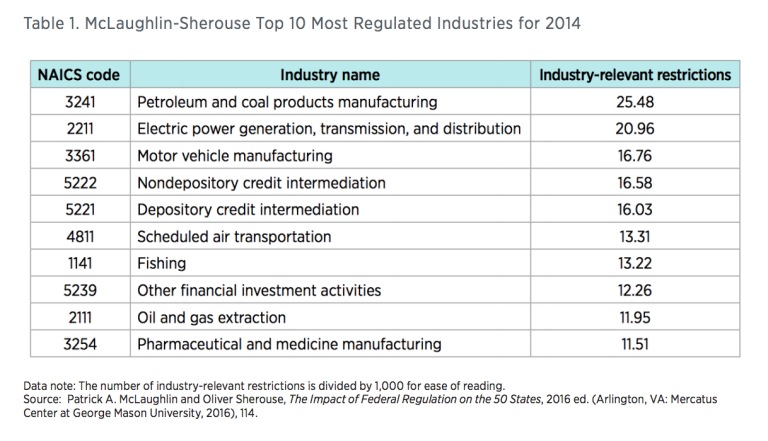One factor that contributes to slower economic growth is the burden of regulatory accumulation.

Economic growth is responsible for the astonishing gains in income and standard of living that Americans have experienced since the country’s founding. Small differences in the rate of economic growth can translate into huge changes in income and living standards over time. Figure 1 demonstrates the consequences of a growth rate of 2 percent versus a growth rate of 5 percent.

At a 2 percent growth rate, it would take 35 years for Kentucky’s gross state product (GSP) to double. If the economy grew at 5 percent, the GSP would quadruple in even less time, just over 28 years. Accounting for population growth, if the economy grew at 2 percent, per capita income would rise to $72,000 in 35 years, while at a 5 percent growth rate it would grow to $157,000 in just 28.4 years.
The failure of economic growth to return to its prerecession levels in Kentucky and in the rest of the United States, as figure 2 shows, is a matter of concern with respect to the effect on the income and standards of living of Kentucky residents.

One factor that contributes to slower economic growth is the burden of regulatory accumulation. In a recent study, Bentley Coffey, Patrick A. McLaughlin, and Pietro Peretto constructed a growth model of the US economy using data from the Code of Federal Regulations to estimate that regulation led to a $4 trillion loss in GDP in their base year 2012. That is, had regulations remained at the the same level as they were in the very heavily regulated year of 1980, then the economy would have been 25 percent larger ($4 trillion) in 2012 than it actually was. The 2012 economy employed 135 million workers in December of that year. Assuming a 25 percent greater GDP would employ a proportionally greater number of workers, the 2012 US economy was missing 34 million jobs to go with the trillions of dollars in missing output.
In addition to the rising burden of state regulation in Kentucky, the federal regulation and state enterprise index demonstrates that federal regulation imposes a higher-than-typical burden as well. Federal regulations affect Kentucky’s businesses over 30 percent more than they affect the average state’s. Table 1 shows the most regulated industries in the United States.

Economic growth is the key to increasing living standards for Kentuckians. Regulations reduce growth rates, and small changes in the growth rate result in large changes in per capita income over time. Regulatory reform at the federal and state levels has the potential to unleash economic growth for Kentucky.